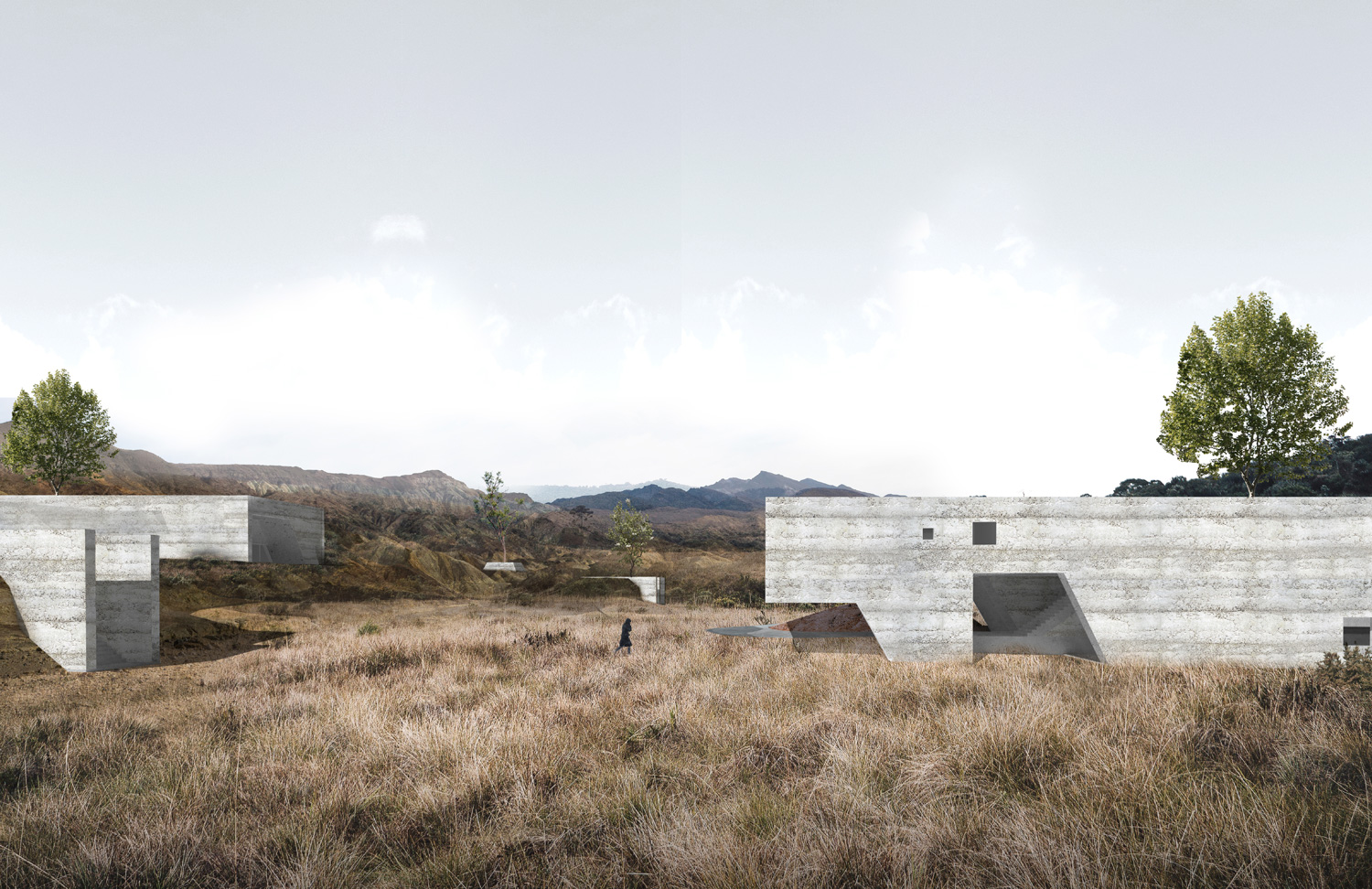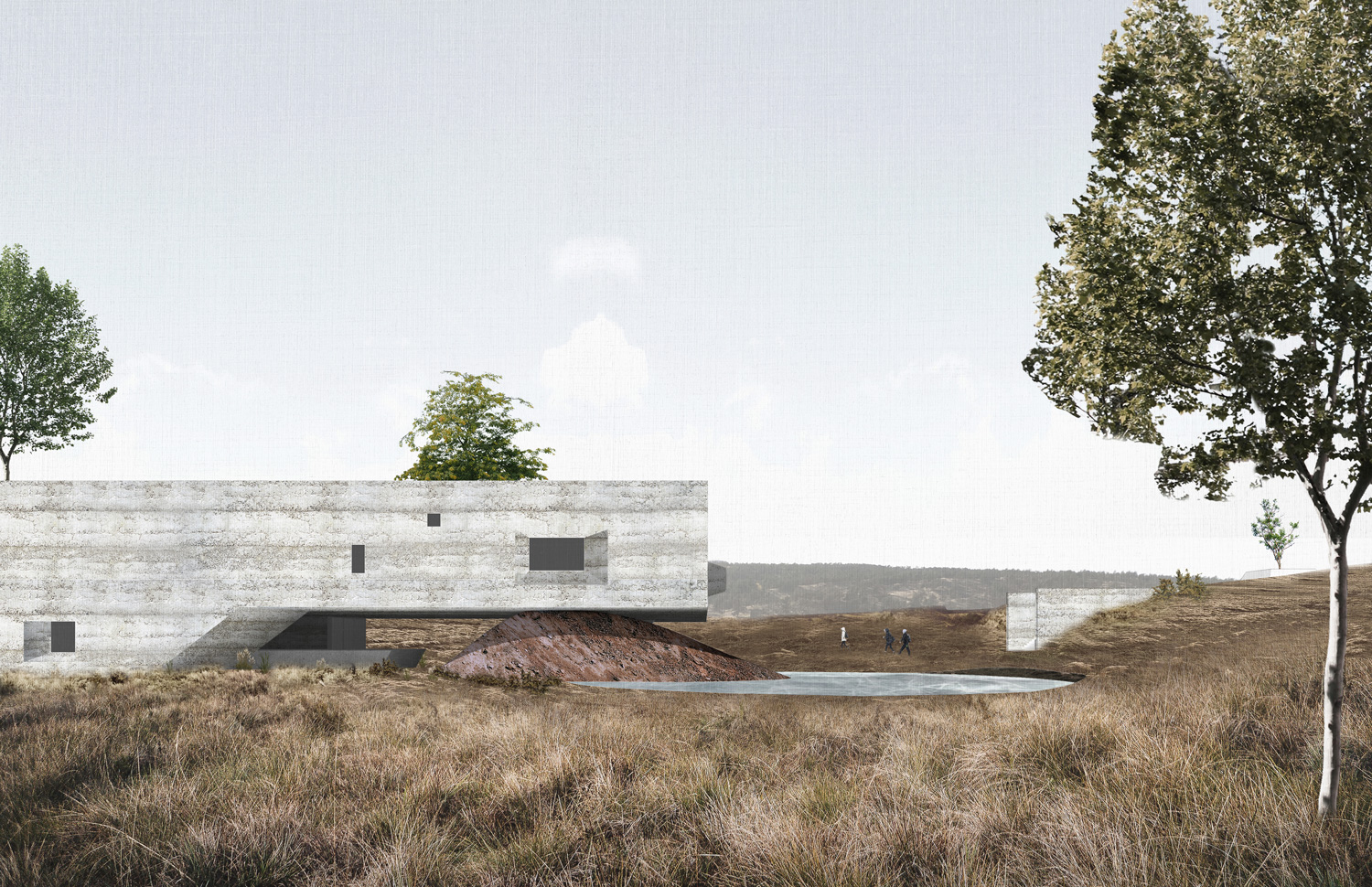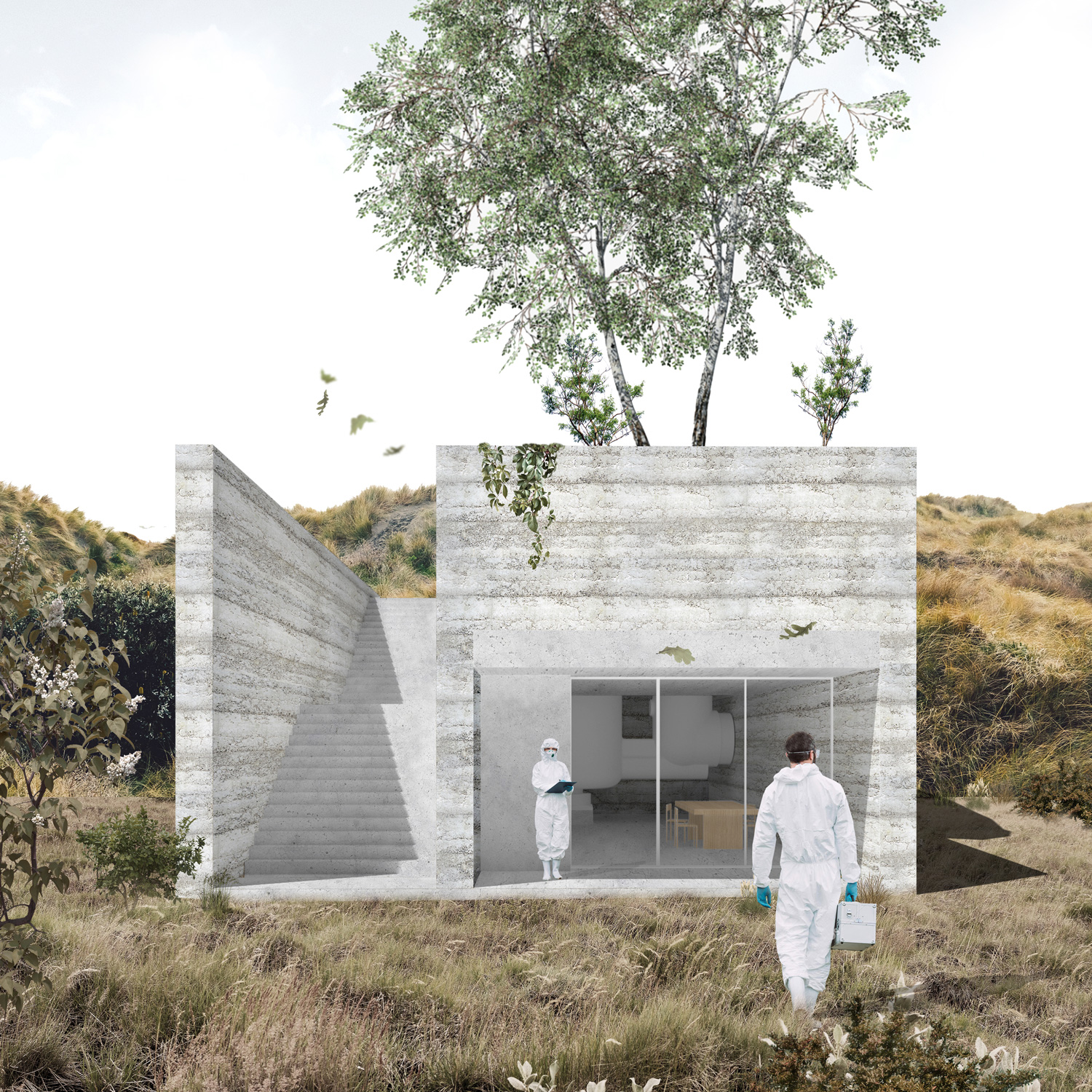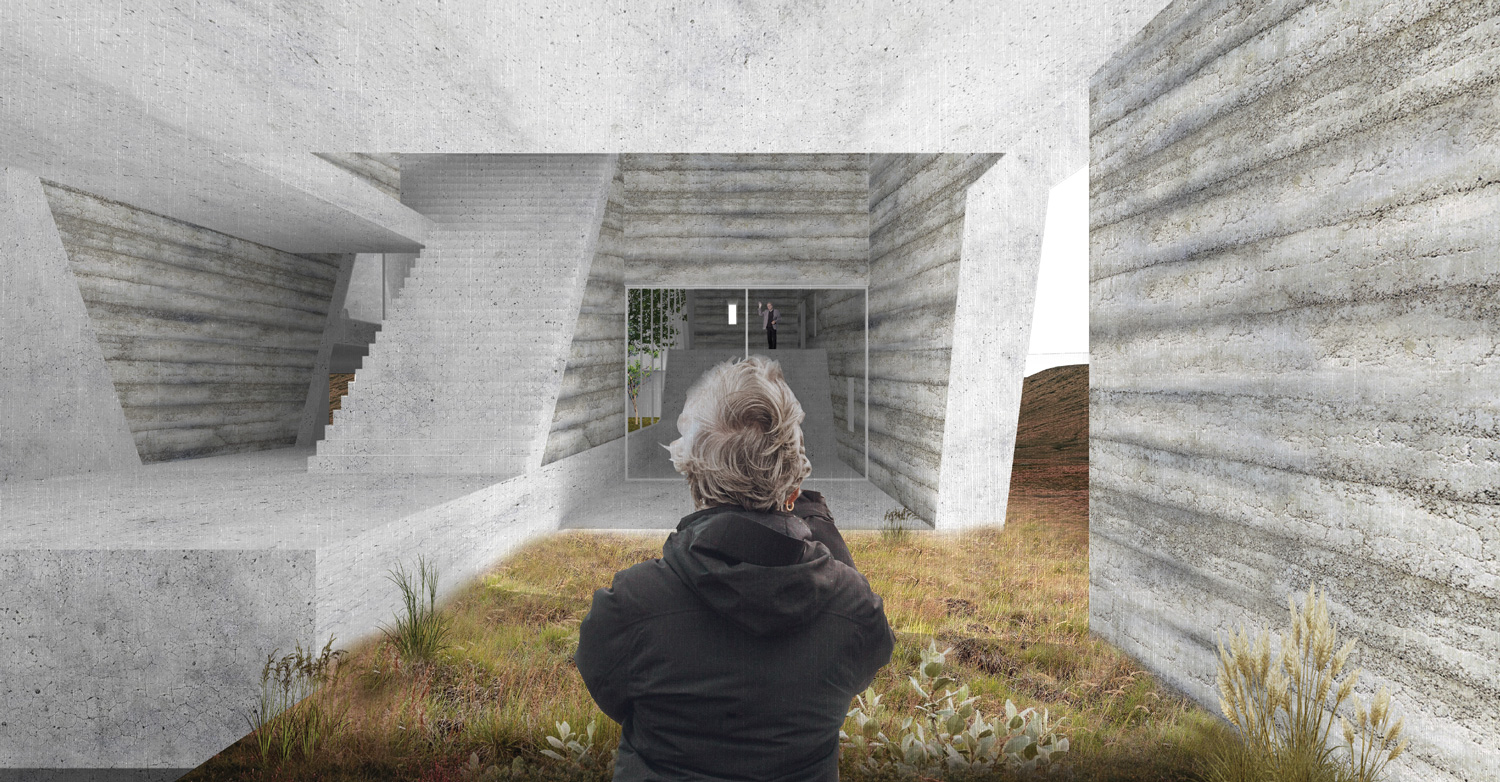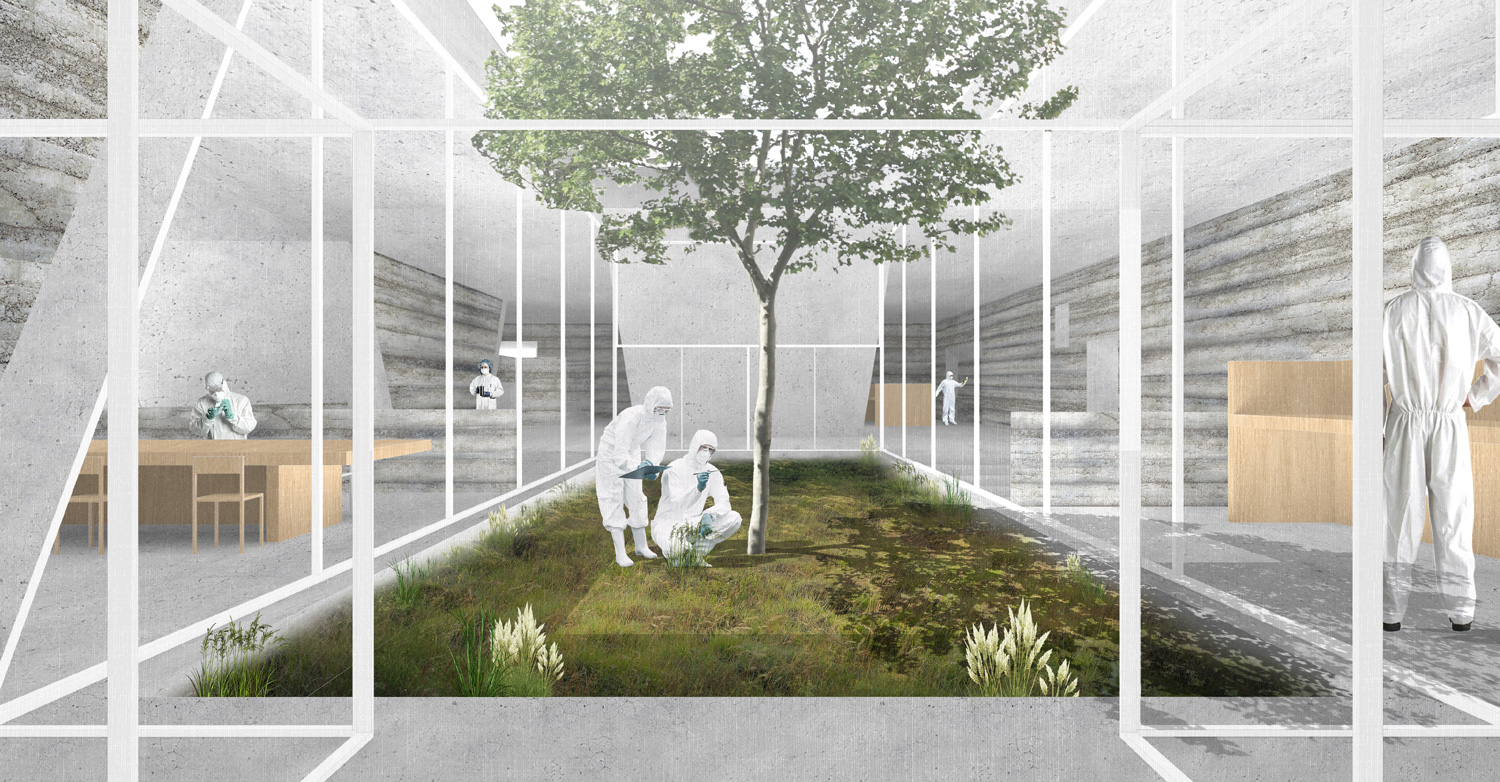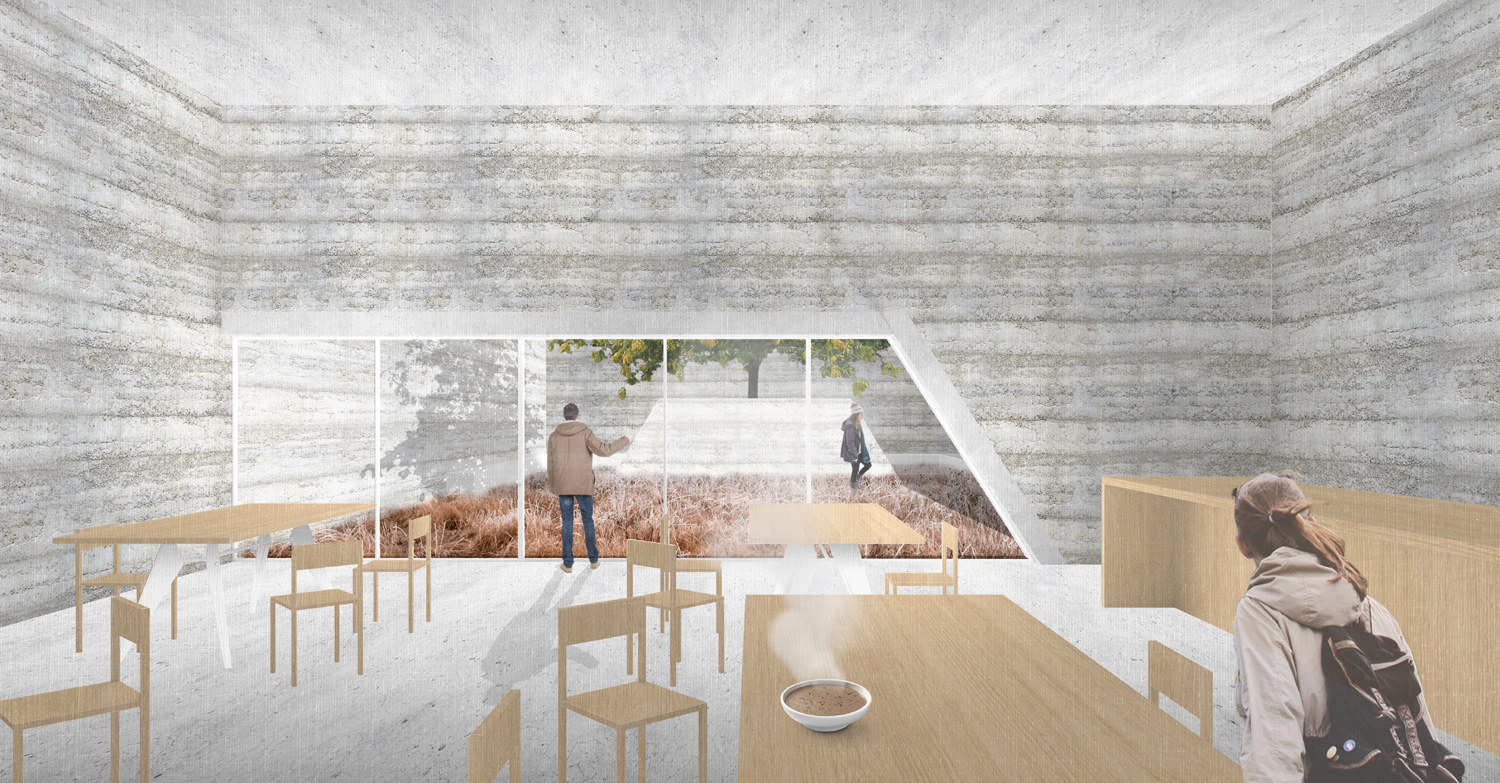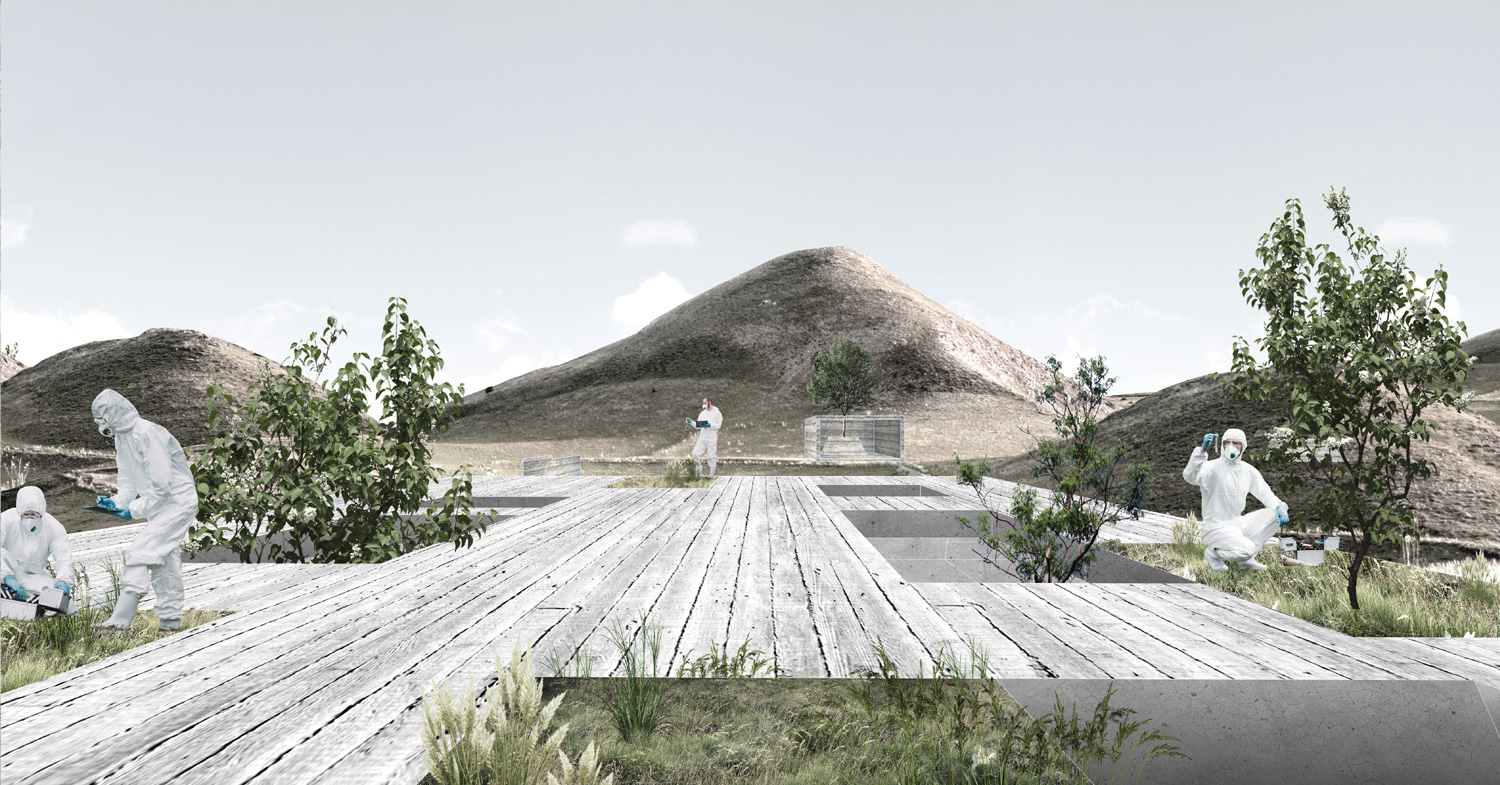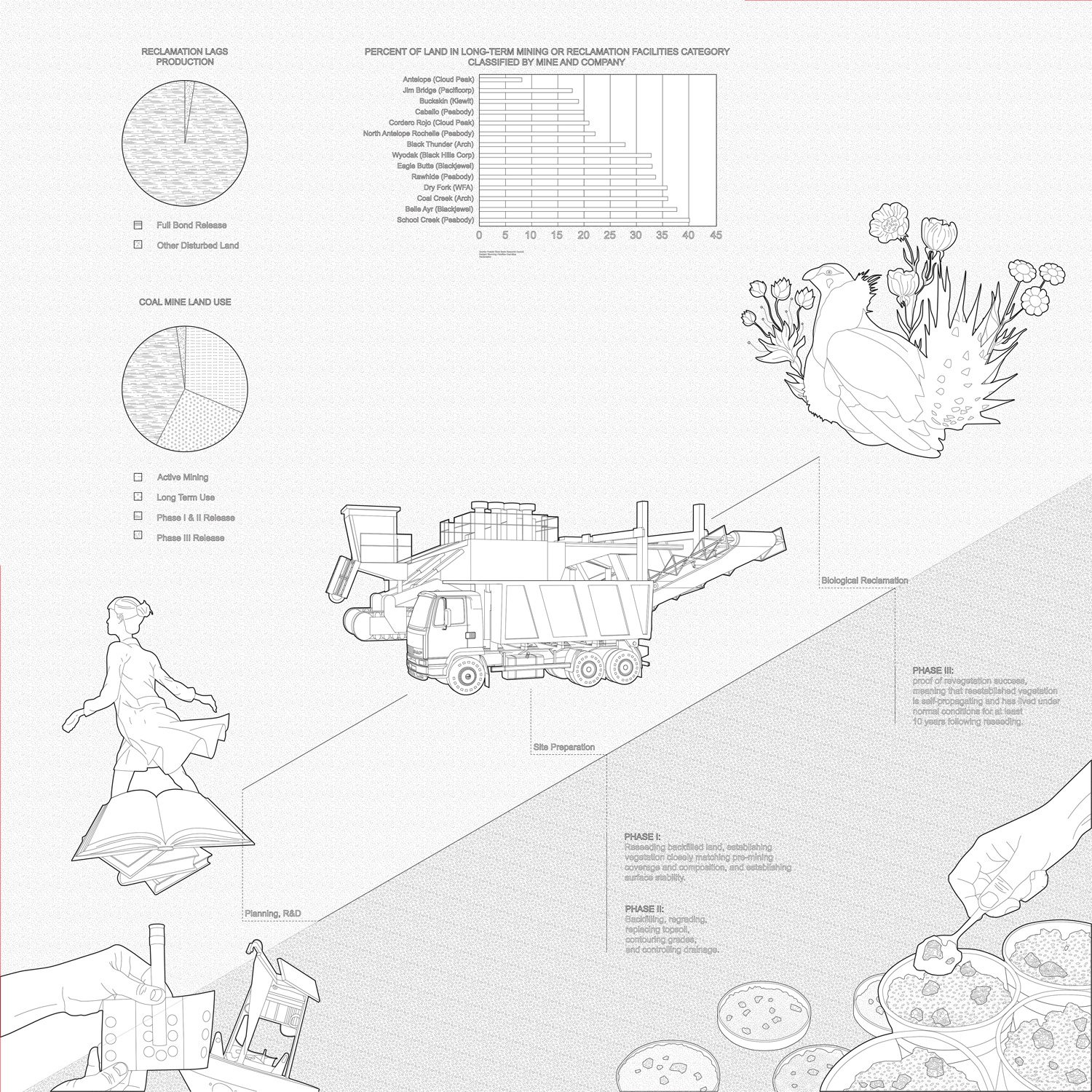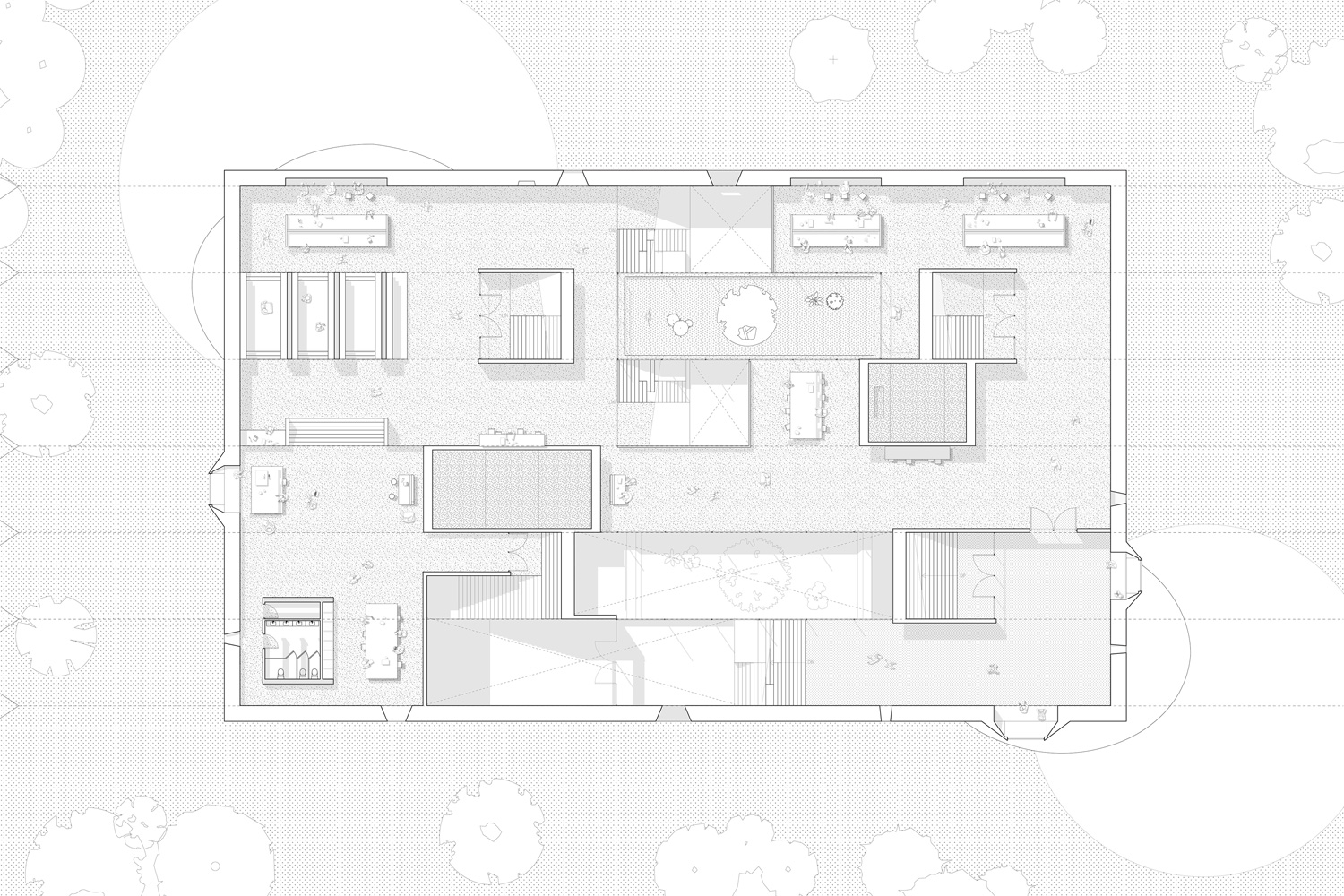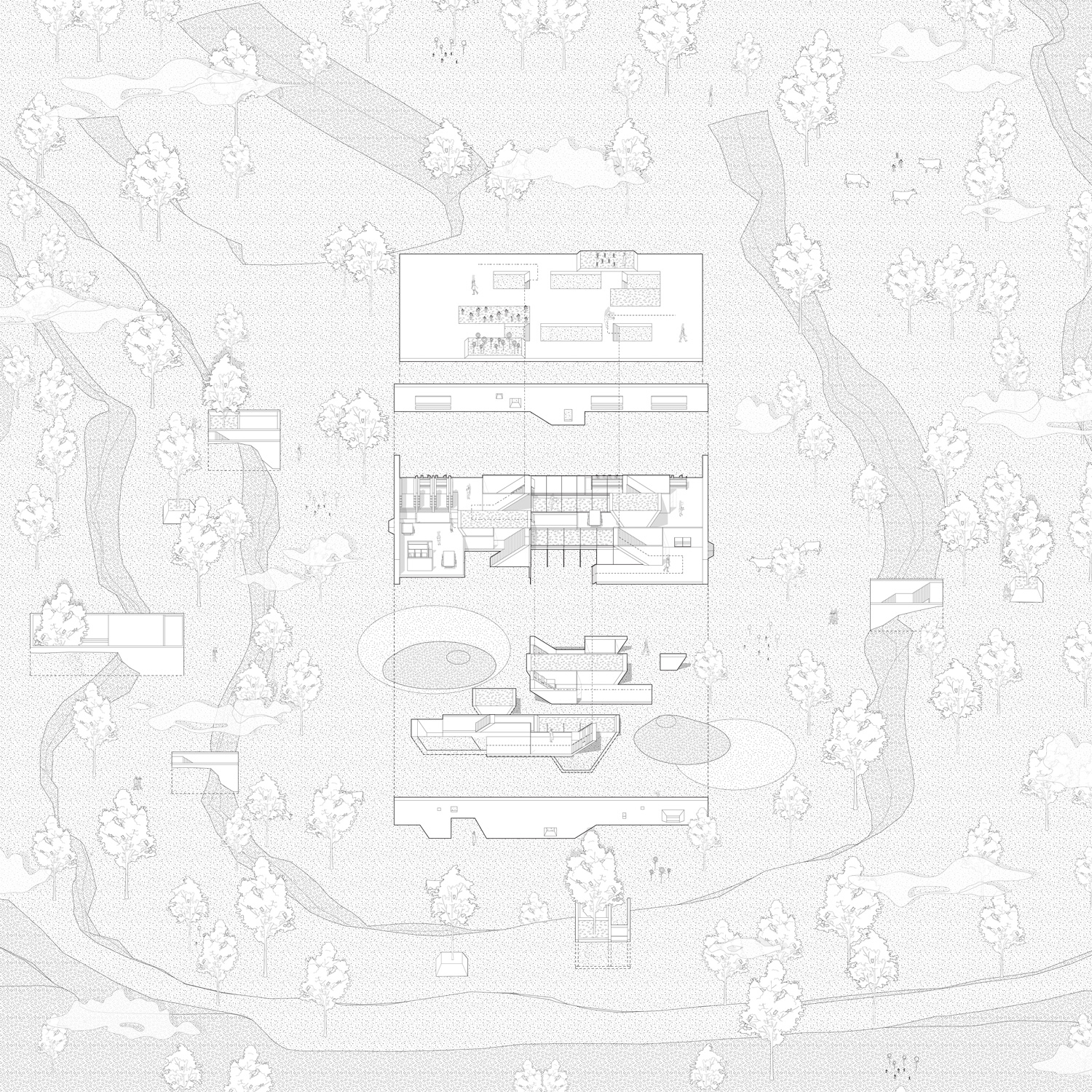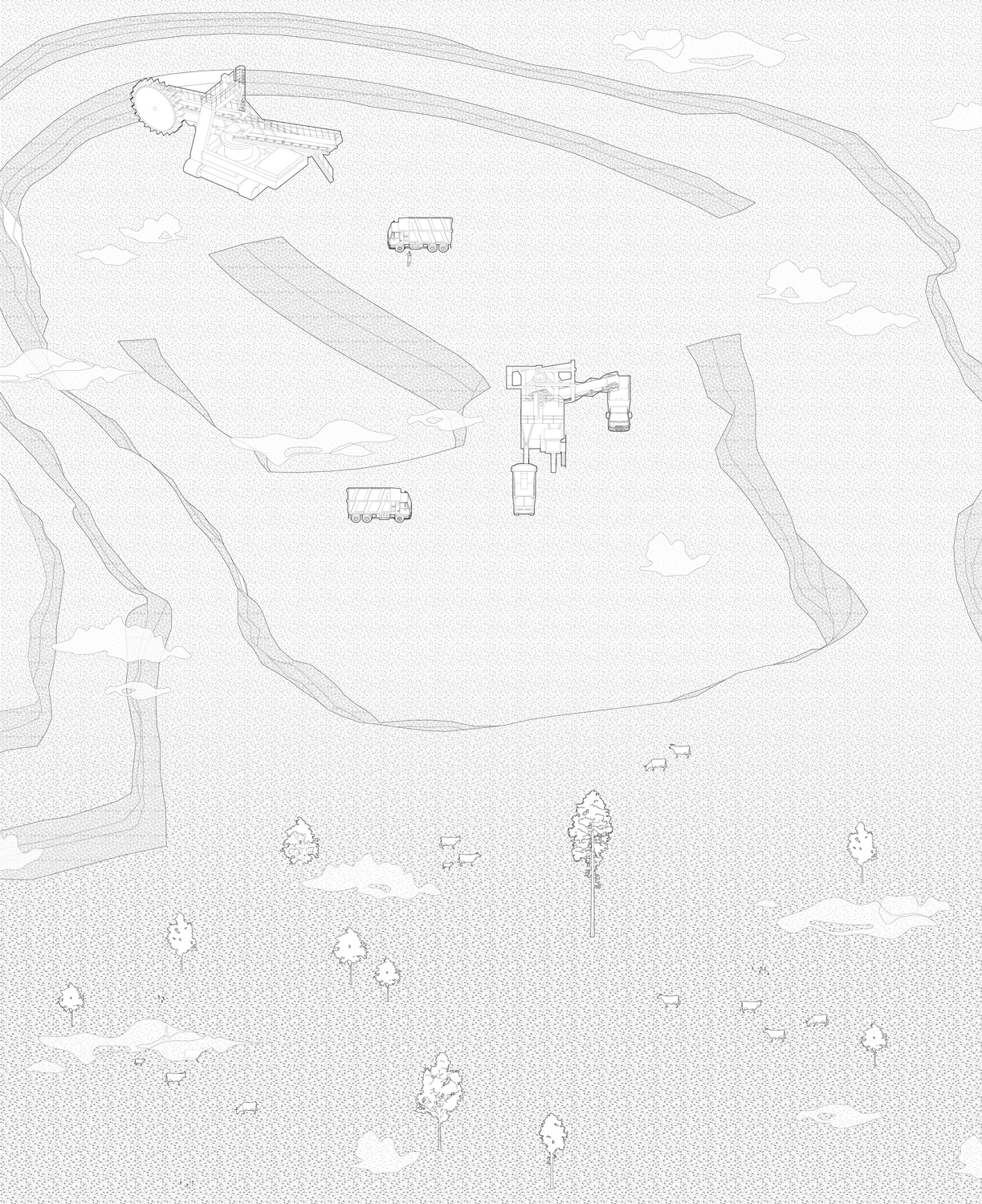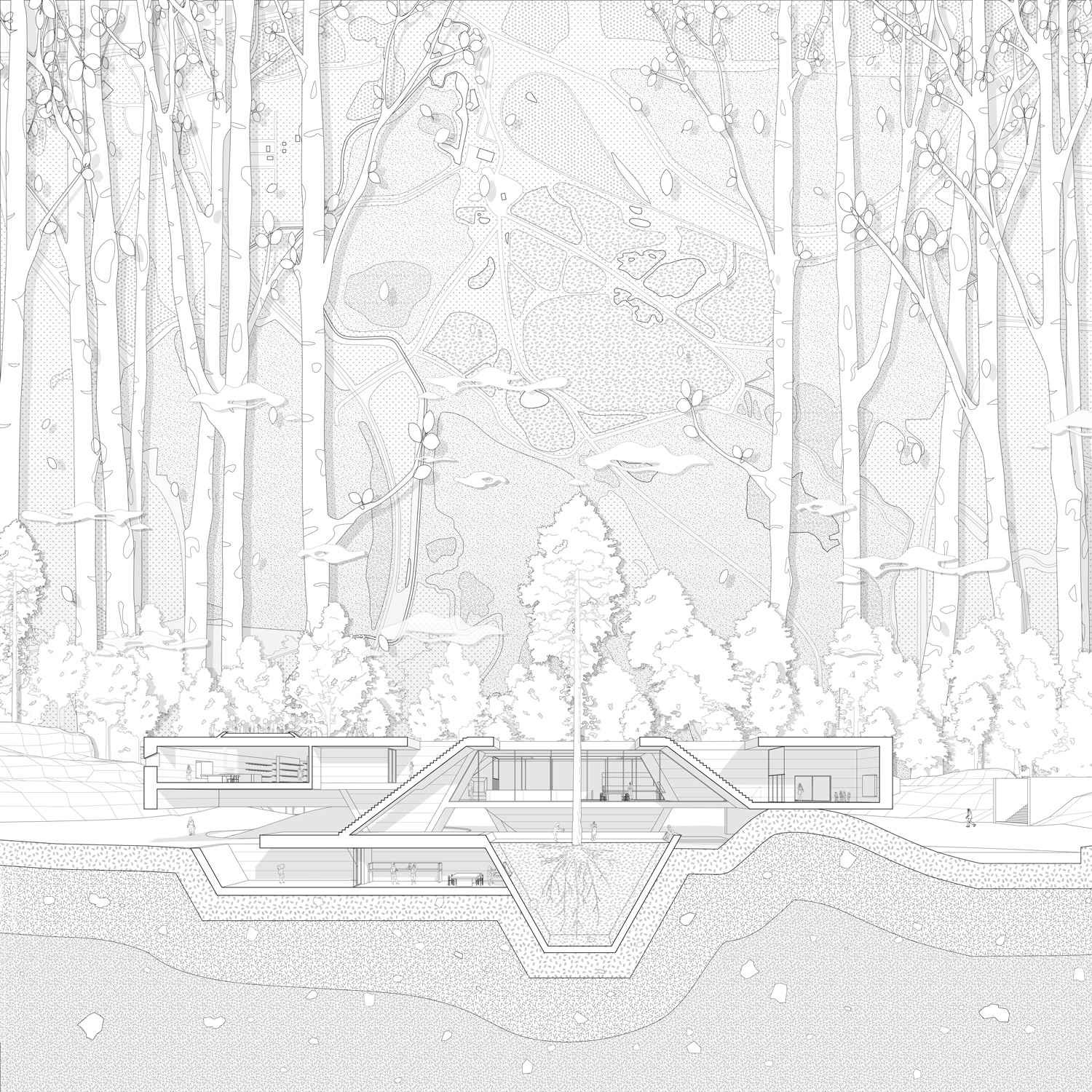☉ The Soil Institute is an academic project by Timothee Mercier for Columbia GSAPP in 2017. It is located in Wyoming United States in a mountain setting. Its scale is small with a surface of 350 sqm. Key material is concrete.
The Soil Institute is a research center for soil health and phytoremediation. Through its laboratories, archives and landscape the new center will test and monitor soil from coal surface mines in the State of Wyoming and beyond. It is at once a potential solution for an accelerated biological reclamation and an alternative to the existing “cut fill cut” model of mining activities. In doing so it creates new architectural spaces – whose language is directly related to local materials, namely earth, and the agents of reclamation, which are the plants themselves.
The main building is a series of “trays” which host six different species of plant that are known to clean the soil of toxins deposited by coal mining. The exact geometry of the super-sized planters is based on the width and depth of the plant roots, which in turn informs the rest of the space within the building.
The smaller buildings at have a variety of programs. Some of the “pods” are focused on soil research and irrigation – at once providing water to the site and studying its effect on toxic soil. Others are open to the public, and offer shelter from the vast landscapes so specific to the state of wyoming in general, and to surface mines in particular. All “site interventions” retain the previously foraged slopes, acting as retaining walls to conserve the topography of open-pit mines.
